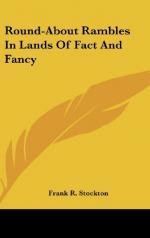[Illustration: THE NEST OF A STORK.]
In these they lay their eggs, and hatch out their young ones. Soon after the time when these young storks are able to fly, the whole community generally starts off on its winter pilgrimage to warm countries; but the old storks always return in the spring to the same nest that they left, while the young ones, if they choose to join that community at all, must make nests for themselves. Although these nests are nothing but rude structures of sticks and twigs, made apparently in the roughest manner, each pair of storks evidently thinks that there is no home like its own.
The stork is a very kind parent, and is, in fact, more careful of the welfare of its young than most birds; but it never goes to the length of surrendering its homestead to its children.
The young storks will be carefully nurtured and reared by their parents; when they grow old enough they will be taught to fly, and encouraged in the most earnest way to strengthen and develop their wings by exercise; and, in the annual expedition to the south, they are not left to themselves, but are conducted to the happy lands where all good storks spend their winters. But the young storks cannot have everything. If they wish to live in the nest in which they were born, they must wait until their parents are dead.
It may be that we have now seen enough of birds’ nests, and so I will not show you any more.
The next nest which we will examine—
“But I thought you were not going to show us any more birds’ nests!” you will say.
That is true. I did say so, and this next one is not a bird’s nest but a fish’s nest.
It is probably that very few of you, if any, ever saw a fish’s nest; but there certainly are such things.
[Illustration]
The fish which builds them is called the Stickleback. It is a little fish, but it knows how to make a good nest. The male stickleback is the builder, and when he thinks of making a nest he commences by burrowing a hole in the mud at the bottom of the stream where he lives. When with his nose and body he has made this hole large enough, he collects bits of grass, roots, and weeds, and builds his nest over this hole, which seems to be dug for the purpose of giving security to the structure. The grass and other materials are fastened to the mud and earth by means of a sticky substance, which exudes from the body of the fish, and every part of the nest is stuck together and interlaced so that it will not be disturbed by the currents. There are generally two openings to this nest, which is something like a lady’s muff, although, of course, it is by no means so smooth and regular. The fish can generally stick its head out of one end, and its tail out of the other.
When the eggs have been laid in the nest, and the young sticklebacks have been born, the male fish is said to be very strict and particular in the government of his children. For some time—while they are yet very small—(and the father himself is a very little fellow) he makes them stay in the nest, and if any of them come swimming out, he drives them back again, and forces them to stay at home until they are of a proper age to swim about by themselves.




